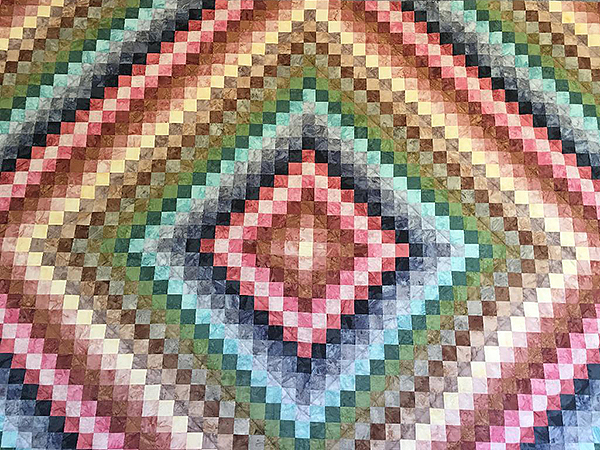
I received a quilt of valor last Veterans Day. I want to hang it for display. I usually use Danish oil to finish my projects, but will the oil finish damage this quilt? Should I apply a coat or two of polyurethane over the Danish oil? – Dave Palas
Tim Inman: You are right to be concerned about the interaction of your quilt with the wood suspending it for display. You don’t want a discolored line to ruin your special keepsake if the oils in the finish — or chemicals in the wood like tannins — should stain the cloth. Quilt conservation is a topic unto itself. One conservator friend suggests that displaying a quilt in the light and air is just a very slow way to degrade the fabric and cause its eventual demise. I personally think fine antiques and works of art like quilts that are kept in dark drawers and safe rooms is a waste. They should be enjoyed. Some do not share my views!
So, what finish to use? First, use something that will harden and not change over time due to interaction with air or moisture. No linseed oil! Shellac is inert, but it will get soft with heat. A poly varnish? Well, maybe. But here is a conservator’s input: Use a sleeve made for the purpose to slip over the finished wooden hanging bar. There are specialty products made for this; they are usually made from archival polyester or Mylar® film. Another approach might be to lay a protective piece of undyed polyester fabric over the rack bar to further distance the quilt from the wood surface beneath. Finally, whatever you do decide to use, move the quilt from time to time. Don’t let it simply stay in place forever; shift it a little every Sunday morning, for example. Did you know that in museums with precious books, they often turn one page every week? It’s good advice for objects and for we humans, too: Keep moving!
The University of Nebraska, near me, has an International Quilt Study Center and Museum. I can offer them as an excellent resource for more information. Their website is: www.quiltstudy.org. Click here to visit a page on their site dedicated to Care and Conservation.
Chris Marshall: Congratulations on your quilt of valor, and thank you for your service. If this were just an ordinary wall hanging, a rod or simple bracket of some sort might be all that would be required to get it up and displayed. Case in point: we’ve had a hand-dyed quilt hanging on our wall at home (it’s in the photo above) for enjoyment for more than 15 years. We were of modest means at the time and so simply stitched a hook-and-loop strip to the back and mounted it to a narrow, unfinished wooden board on the wall with the mating hook-and-loop strip. It has hung well for all of these years with no special fuss. But, I’m sure our hanging “method” would be a conservator’s worst nightmare.)
However, in your case Dave, this isn’t just a decorative wall dressing like ours is. It’s a special historical keepsake to be treasured and preserved. So, I’d get in touch with a textile conservation organization such as the one Tim suggests and seek some advice from the experts. Seems worth the effort to make sure your quilt not only will display beautifully now but also in a decade or three, too.





